The current visit of Economy Minister Habeck to India is intended to bring “more resilience and diversification” to Germany, meaning greater independence from China. However, it may take some time before India, now the most populous country in the world, becomes an economic partner comparable to the People’s Republic.
In the meantime, it is important to set up our critical infrastructure in a way that is not dependent on a rivaling power. This is also emphasized in the new China strategy of the German government, with a particular focus on the 5G mobile network expansion, which was long believed to be unprofitable without the Chinese provider Huawei.
Now, newcomer 1&1 Mobilfunk aims to prove that it is possible without the Chinese. 1&1 has partnered with the Japanese company Rakuten and is pursuing “Open RAN” networks, where various manufacturers can come together instead of relying solely on Huawei components.
1&1 does have an advantage over other German providers as its 5G networks are not yet established, as Finn Mayer-Kuckuk reports. If a ban on Huawei occurs, it will result in huge costs for Telekom & Co. The major provider is even considering going to court over the matter.
Once, Hong Kong had the freest press in East Asia. However, since the Hong Kong government imposed the national security law almost overnight in July 2020, Hong Kong’s media landscape has been steadily moving closer to the heavily censored mainland. Over the last three years, about a dozen media outlets have been forced to shut down, and individual journalists are now openly on Beijing’s hit list.
In fact, even before the security law, press freedom in the special administrative region had eroded and weakened, as Felix Lee explains. In his Feature, he traces the developments since the handover of the colony to China in 1997 and comes to the hopeful conclusion that not all is lost yet.

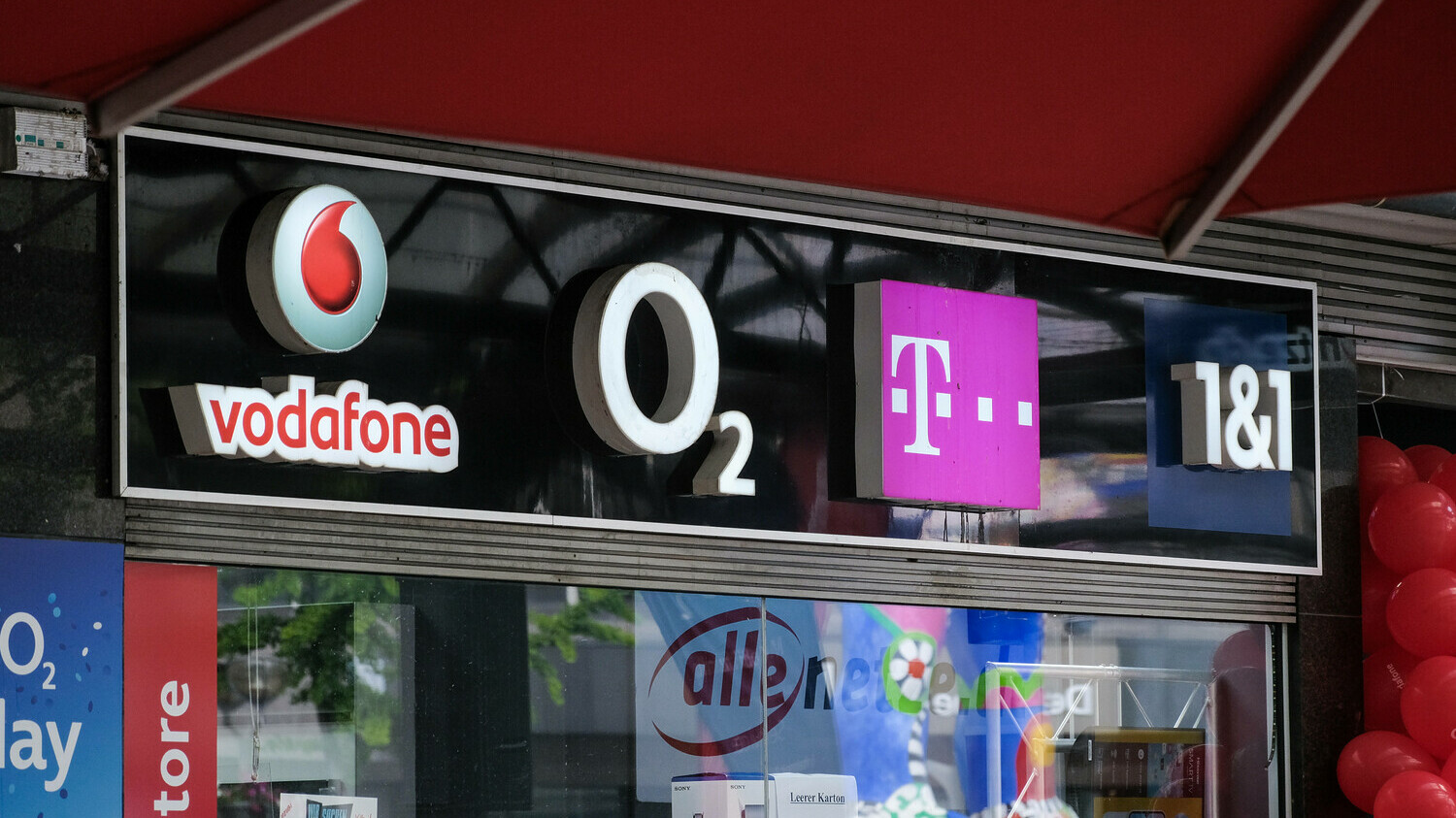
The German government’s new China strategy aims to better protect critical infrastructure from the access of rival powers. To achieve this, it plans to quickly introduce a “critical infrastructure” law. One central aspect of this law is the data networks and, in particular, the 5G mobile network expansion
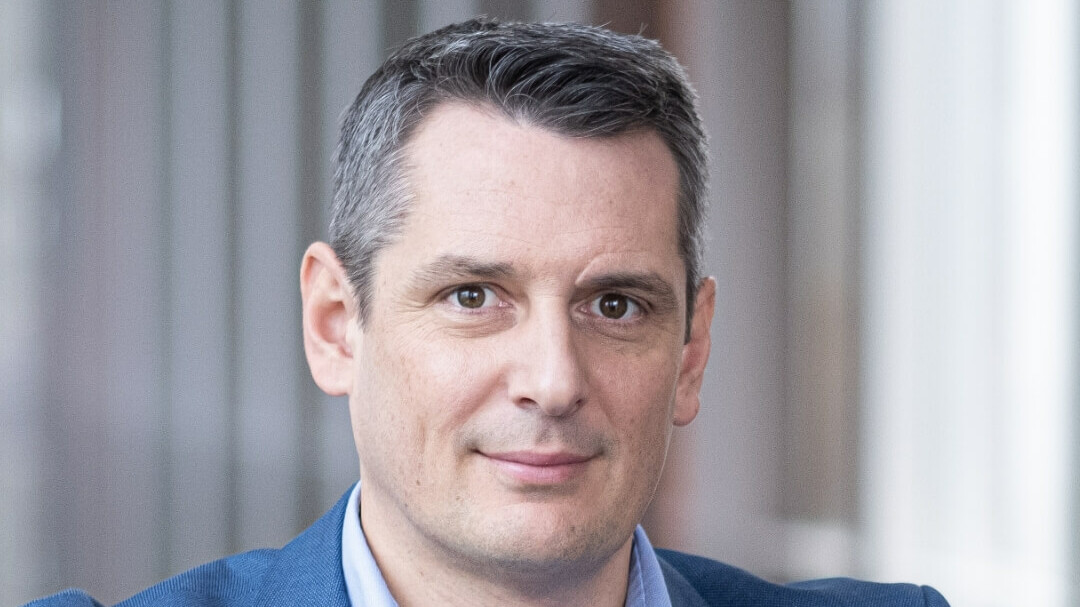
The newcomer in the telecom industry, 1&1 Mobilfunk, is making a strategic move by building its network entirely without Huawei components. The planning of its network began in 2019 when other providers were still firmly relying on Huawei. “Even then, there was a discussion about the use of Chinese suppliers,” Michael Martin, CEO of 1&1 Mobilfunk GmbH, told Table.Media. “It became increasingly inappropriate to sign contracts with Chinese suppliers when building a new network.”
Unlike established network operators Telekom, Vodafone, and Telefónica, 1&1 has an easier time avoiding Huawei components because their networks are already in place. However, this puts them under considerable pressure. A Huawei ban is looming on the government’s agenda. The planned “critical infrastructure” legislation could make this ban concrete.
1&1 has partnered with the Japanese company Rakuten to create a technology-agnostic, Huawei-free network across Germany. Rakuten is implementing the “Open RAN” concept, where “RAN” stands for Radio Access Network. Components from different manufacturers are designed to seamlessly cooperate in an Open RAN. A complete system, from the antenna to the server, can be procured from the free market. The only requirement is that the components follow the Open RAN standard and the software code is accessible. Rakuten maximizes the possibilities arising from this concept.
Rakuten, originally an e-commerce conglomerate, only entered the fiercely competitive Japanese mobile communications market in 2017. As a software-driven company, Rakuten adds the glue that holds together the assembled components: computer programs that enable the seamless cooperation of the parts. For this purpose, Rakuten has invested in US software companies, such as Altiostar, specializing in access network programs and Mavenir, developing software for core networks. Hardware suppliers include Japanese provider NEC from Tokyo and Cisco from the USA.
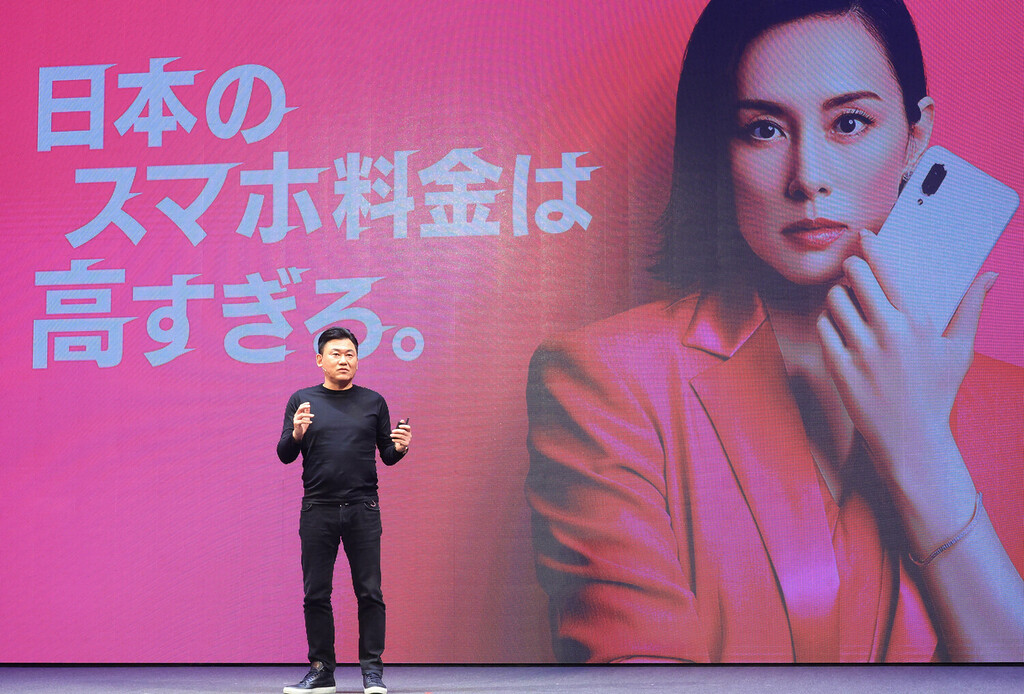
Rakuten, and now also 1&1, do not order everything from a single supplier, but instead, they purchase from manufacturers all over the world, especially from the USA and Japan. The same component can come from different suppliers. These parts can be combined and seamlessly integrated to form the mobile network. “We have decided not to collaborate with a single major network equipment supplier who provides everything but to cooperate with experienced specialists who deliver precisely fitting hardware, software, and powerful antennas,” says Martin. The experts from Rakuten assist in this process.
However, the other providers do not offer this level of openness. This also applies to Huawei, as the company confirmed upon request. The networks they offer are traditional Single RAN, which ties the customers to one provider. Huawei emphasizes that Single RAN is faster and more cost-effective.
The software of the Huawei platform fundamentally works only with Huawei hardware. On the positive side, everything is optimally aligned. Some experts even doubt whether the combination of cheaper everyday parts in Open RAN can achieve the same high performance and reliability as the solution from a single supplier.
Martin is, however, convinced that his Open RAN will work exactly as it should. “Rakuten has already shown in Japan that the technology performs very well.” The engineers at Rakuten had to identify and eliminate unexpected errors during their pioneering work with Open RAN. But these initial difficulties have been overcome, he said.
In Japan, Rakuten is considered an innovative company, and its network operates to the satisfaction of customers. Independent studies give Rakuten high marks, making it a standard-bearer for the Open RAN movement.
However, the example of 1&1’s new network should not distract from the difficulty that Telekom will face in replacing everything it has already installed by Huawei. The proportion of Huawei components in the networks of Telekom, Vodafone and Telefónica is not known but is estimated to be close to 60 percent.
Replacing these parts will be time-consuming and expensive. Barclays Capital estimates the cost for German providers at 2.5 billion euros, with Telekom accounting for 1.1 billion euros of that total. There are rumors that Telekom might sue the government for damages if it is forced to convert.
So far, no government agency or security firm has proven the existence of unexpected backdoors or other malicious traps in Huawei’s networks. For a framework law for critical infrastructure, theoretical future security risks are the focus, not current concrete threats.
Interesting questions will arise here. Open-RAN components also come from China in many cases, even if they bear Western brand names. For example, in the servers of the company Supermicro, which offers Open-RAN systems, suspicious chips from the People’s Republic of China were found in the past. The Open-RAN Alliance includes many Chinese names that have connections to the Chinese security apparatus.
Open RAN is by no means a panacea. “It is not inherently safer than single vendor solutions,” says Tim Ruehlig, an expert in technology security at the German Council on Foreign Relations (DGAP). When building such a network, one must also consider the trustworthiness of each individual manufacturer.
Additionally, Open RAN is based on a high level of virtualization, i.e., software-based networks instead of physical lines. Virtualization has significant advantages but also increases complexity. Complexity is precisely what undermines cybersecurity. “In short, Open RAN has pros and cons.”
Cost savings, which mobile operators hoped for with Open RAN, seem to be achievable only where there are no major existing networks. Rakuten and 1&1 are exceptions in this regard. “For Telekom to switch to Open RAN now doesn’t make much sense. The cost savings are likely to be limited,” says Ruehlig. Especially since the security vulnerabilities “won’t be truly closed.”
Ruehlig believes that the current popularity of Open RAN is driven more by politics than technology. The US, in particular, is interested in promoting Open RAN because none of the leading network equipment suppliers are based there, but the big cloud providers like Amazon, Microsoft, and Google are. The virtual mobile network is based on the cloud. “The appeal of Open RAN for us Europeans is currently unclear to me,” says Ruehlig.
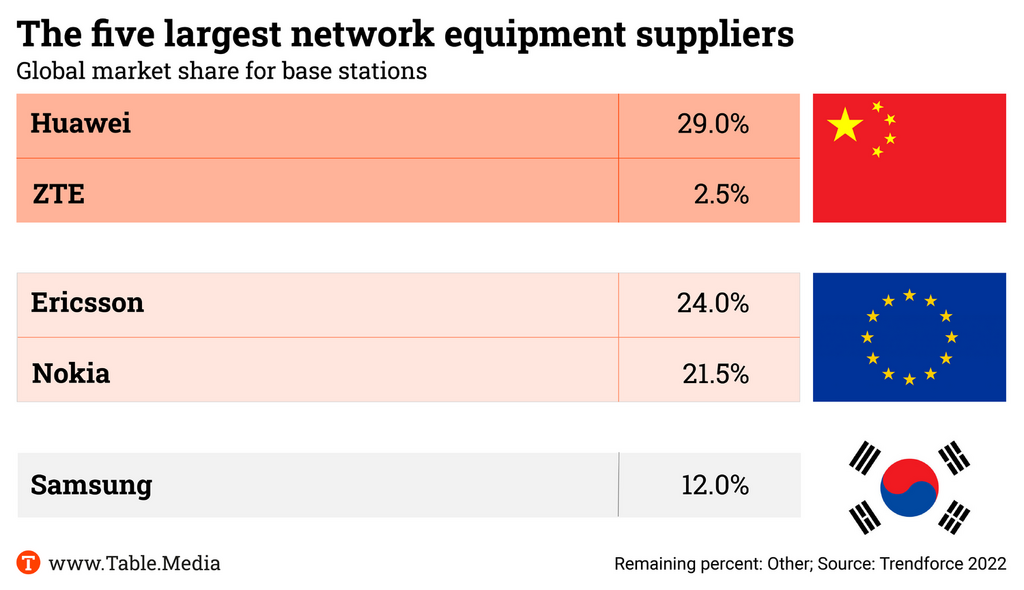
Open RAN could, nevertheless, break the era of a small number of major network equipment suppliers. So far, five providers dominate the market: Nokia, Ericsson, Huawei, ZTE and Samsung. Even with doubts about the efficiency of Open RAN, a German “critical infrastructure law” could swing the pendulum in this direction as a political decision.

Hong Kong’s Citizens’ Radio never had an official license. Yet, the broadcaster, which always advocated for democracy, managed to survive for 18 years. The authorities in the southern Chinese special administrative region tolerated its existence. Moreover, even politicians who were not part of the democratic camp granted interviews to the station. However, on June 30, 2023, the station aired its last program.
“The political situation in Hong Kong has become unstable,” said Tsang Kin-shing before the final broadcast, which was recorded in a crowded studio in the presence of numerous supporters. “When we invite guests, they cannot speak freely because there are so many red lines,” explained the 67-year-old, citing the reasons for the shutdown. Additionally, the authorities had frozen the company’s account where donations were received, leading to financial drought for the broadcaster.
Since the Hong Kong government, under pressure from the Chinese leadership in Beijing, hastily enacted the National Security Law in July 2020, the special administrative region’s authorities have targeted pro-democracy activists and severely impacted journalists. The most prominent case is that of the popular tabloid Apple Daily, which was forced to cease operations in 2021. Its publisher, Jimmy Lai, has been in prison for two and a half years and faces the possibility of life imprisonment. Former editors-in-chief of the now-defunct news website Stand News are also standing trial. Over the past three years, around a dozen other media outlets have closed down.
Once prestigious newspapers like Ming Pao or South China Morning Post (SCMP) have become government-friendly publications. A former SCMP employee reveals that dozens of journalists were fired or left voluntarily because they disagreed with the new editorial stance. This has also affected local news coverage. A Hong Kong media scholar, who prefers to remain anonymous due to fear of repression, laments that controversies about Hong Kong unrelated to the Beijing leadership no longer appear in these media outlets.
Prior to 1997, the year when Hong Kong was handed over to the People’s Republic of China after 150 years of British colonial rule, the city had the most unrestrained press in East Asia. The leadership in Beijing had guaranteed the Hong Kong people significant legal, economic, and political autonomy for 50 years. Freedom of speech, freedom of the press and publication rights are officially protected under Article 27 of the Basic Law of Hong Kong and based on Article 16 of the Hong Kong Bill of Rights.
The erosion of these rights began long before the introduction of the National Security Law. Targeted attacks on liberal media outlets, withdrawal of advertising, and the appointment of pro-Communist Party editors-in-chief had already started in the early 2000s. Individual journalists were physically assaulted.
In 2002, Hong Kong was ranked 18th on the Reporters Without Borders’ annual press freedom index. By 2015, the Chinese special administrative region had slipped to 70th place. With the implementation of the National Security Law in 2020, Hong Kong now sits at a dismal 140th place.
Although there are still differences between Hong Kong and the mainland, mainland China strictly controls the media with absolute censorship. Media outlets are centrally directed with daily directives. Foreign online networks such as Facebook, Twitter, YouTube and most Google services are blocked, as well as the websites of The New York Times and The Wall Street Journal.
In Hong Kong, most internationally used websites and online networks remain accessible. Only specific articles become victims of censorship. For example, an article about a diplomatic dispute between China and the United States, published on June 21 on the website of the Chinese-language newspaper Lianhe Zaobao from Singapore, was not accessible in Hong Kong. The article quoted US President Joe Biden referring to Xi as a “dictator”.
Nevertheless, when it comes to press freedom, Hong Kong increasingly resembles the dire conditions in the mainland, which ranks second to last among 180 countries assessed. Currently, 101 media workers are imprisoned in China, while in Hong Kong, the number stands at 14. Combined, Reporters Without Borders refers to it as the “world’s largest prison for media professionals”.
Resistance comes from a few independent online media outlets. Former journalists from the South China Morning Post founded the English-language internet platform Hong Kong Free Press, supplied by journalists living in the United Kingdom, Taiwan or Singapore. In June, Hong Kong’s highest court overturned the conviction of investigative journalist Bao Choy in connection with protests critical of the government. Choy had investigated an attack on democracy activists by a group of armed men.
In 2021, a judge found her guilty of “making false statements” and imposed a fine. The Supreme Court justified its decision based on “constitutionally guaranteed freedom of speech and the press” – a glimmer of hope that freedom in Hong Kong is not completely extinguished.
For the first time in over ten years, a Federal Minister for Economics, Robert Habeck (Green Party), is visiting India. His objective is to reduce the economic dependencies of many German companies on China and promote diversification towards the subcontinent. In addition to holding talks with top politicians in New Delhi, he plans to visit companies in Mumbai. He will also participate in the G20 Energy Ministerial Meeting in Goa.
From Habeck’s perspective, India offers great potential: Demographically, India has surpassed China as the most populous country in the world, with around 1.4 billion people. Economically, India is rapidly catching up. While the trade volume between Germany and India has increased significantly in recent times, reaching around 30 billion euros last year, India still cannot compete with China. The trade volume between Germany and the People’s Republic is nearly ten times higher at around 299 billion euros.
Habeck’s trip to India is part of the new China strategy presented by the German government last week. It includes a concept called “De-Risking,” aiming to reduce unilateral dependencies on resources and broaden and diversify supply chains. Before departing for New Delhi, Habeck stated, “Broadening our horizons means not always focusing solely on China.” flee
The three-day visit of US Special Presidential Envoy for Climate, John Kerry, to China has led to a revival of climate dialogue between the two countries, even though no specific substantive agreements have been reached. Both sides plan to work together “intensively” in the coming weeks, Kerry said. Dates for the next two meetings are being prepared. With only four months left until the next climate conference, they must make up for lost time. The goal is to achieve a “working product” that is acceptable in both countries, taking into account the challenging circumstances in the US and China, Kerry emphasized.
The following topics are expected to be discussed, according to Kerry:
Reducing coal usage is a sensitive issue in China as the country’s energy security is still heavily reliant on coal. China already announced an action plan to address methane emissions last year.
During his visit, Kerry met with Premier Li Qiang, Vice Premier Han Zheng, China’s climate envoy Xie Zhenhua, and top diplomat Wang Yi. Kerry called for decoupling the climate issue from other disputes between the two superpowers. President Xi Jinping emphasized during the visit that China is committed to its climate goals, but China must determine the path and pace on its own and not be influenced by the outside.
Observers also hoped for progress in climate financing alongside agreements on methane emissions and coal utilization. Both the USA, whose involvement in climate financing is blocked by Republicans, and China, which sees itself as a developing country, have responsibilities in this area. Premier Li Qiang highlighted during the visit that industrialized countries bear the main responsibility for climate financing while developing countries should contribute according to their capabilities.
The visit was overshadowed by geopolitical tensions between the US and China. Official discussions on climate change were suspended after US House Speaker Nancy Pelosi’s visit to Taiwan. Kerry acknowledged the difficult relationship between the two countries and said, “We are trying to restore the process we have worked on for years.” nib
Despite an increase in COVID-19 death tolls in June, there is no longer a mask mandate in public spaces anywhere in China. Since mid-April, people have not been required to wear face coverings in public transportation, offices and schools. Now, apparently, the mask mandate has been lifted for public events as well. Recently, even during television appearances, party cadres and high-ranking officials used to wear masks over their mouths and noses. According to observations by China.Table, this has not been the case since Monday.
However, travel to and from China has not yet returned to pre-COVID levels. According to Chinese media reports, the state immigration authority recorded around 168 million inbound and outbound travels in the first half of 2023. This is less than half (48.8 percent) of the pre-pandemic travel volume. flee/dpa
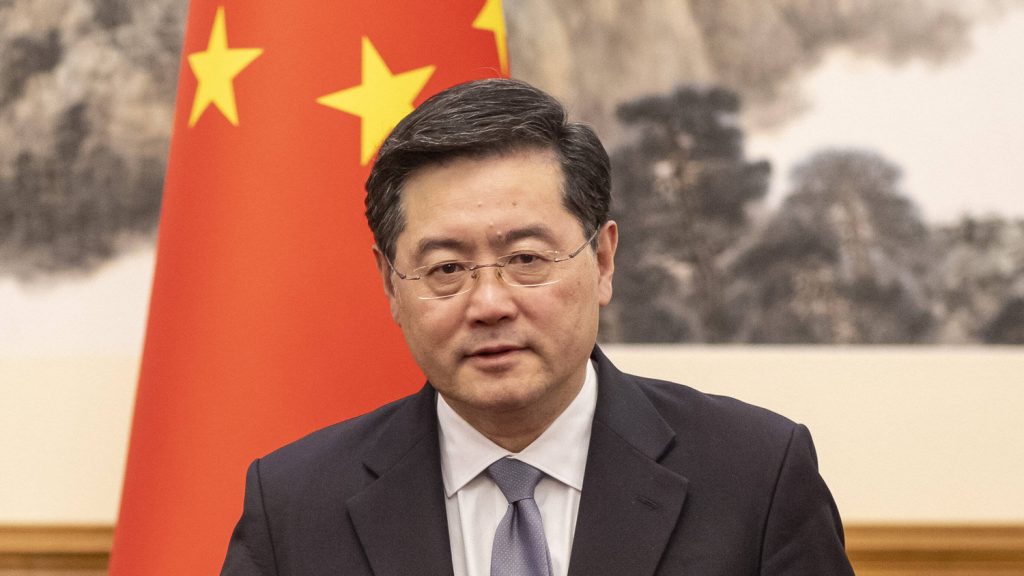
Chinese Foreign Minister Qin Gang is missing without a trace. His last public appearance dates back 24 days to this Thursday. However, Beijing does not consider it necessary to clarify the speculations surrounding Qin.
The 57-year-old, who was considered a hardliner and took office in March, was last seen on July 25 in Beijing, where he received Russian Deputy Foreign Minister Andrei Rudenko, among others. The Foreign Ministry released a photo of the meeting. Since then, no one has seen Qin.
Just a few days before a planned meeting with EU High Representative Josep Borrell in Beijing on July 10, China canceled the appointment without giving any reason. Qin also did not participate in a summit meeting of the foreign ministers of the Southeast Asian states of ASEAN last week. Instead, China’s top diplomat, Wang Yi, attended, who ranks above Qin in the power hierarchy. Recently, Wang represented the Foreign Minister at a number of other events.
Asked why Qin did not attend the ASEAN meeting, a spokesperson for the Beijing Foreign Ministry said last Thursday that this was not possible for “health reasons”.
Since then, speculations have even arisen that Qin was taken out of the picture due to an extramarital affair. Addressing unconfirmed online rumors that Qin had an affair with a journalist from Hong Kong’s Phoenix TV and even fathered a child with her, a spokesperson for the Beijing Foreign Ministry said on Monday that they had “no information” on the matter. However, she did not repeat that Qin was sick.
In the protocol of the daily press conference of the Foreign Ministry, there are no questions about Qin at all. In both last week and this week, all inquiries about the whereabouts of the Foreign Minister were removed.
The disappearance of high-ranking officials, celebrities and businesspeople is not unusual in China. Often it later turns out that they were involved in investigations or other controversies.
One example from the world of politics is Xiao Yaqing, former Minister of Industry and Information Technology. He disappeared for 21 days last year before it became known that the top anti-fraud authority had initiated investigations against him.
Among the most well-known cases in recent years is former Chinese Interpol chief Meng Hongwei, who disappeared during a trip to China in 2018. Two years later, a Chinese court sentenced him to 13 years in prison for accepting bribes.
In February of this year, investment banker Bao Fan also disappeared. Initially, his company, China Renaissance, said they could no longer contact him. A week later, the company announced that they had “learned” that Bao was cooperating with an investigation.
Chinese tennis star Peng Shuai also temporarily disappeared from the public eye in 2021. She had accused former Chinese Vice Premier Zhang Gaoli of sexual misconduct. Her allegations in a Weibo post were immediately censored. Zhang Gaoli was not harmed at the time and soon after participated in public events again.
When Chinese climate envoy Xie Zhenhua missed a panel discussion on the sidelines of the Munich Security Conference in February, it was initially said that he had contracted COVID-19. Later, Xie apologized in a video message for not being able to attend personally due to “health reasons”. However, his condition seemed to have been more serious than publicly announced.
US climate envoy John Kerry later told Foreign Policy magazine that Xie had suffered “some sort of stroke” in January, which incapacitated him for “about a month and a half”.
And what now for Qin? While it is not unlikely that the Foreign Minister is sick, Richard McGregor, Senior Fellow for East Asia at the Lowy Institute in Sydney, told Bloomberg that the longer he is absent, the more likely it is that “there is another, much more serious reason”. Joern Petring
Liu Xunfeng will become the new CEO of Semiconductor Manufacturing International Corporation (SMIC). The Chinese chipmaker made the announcement on Monday. Liu will succeed Gao Yonggang, who is stepping down from his posts as chairman and chief executive officer. Liu was previously vice chairman at SMIC. Previously, he held senior positions at Sinopec and the Shanghai Huayi chemical group, among others.
Xiao Guo-Deters is the new Strategy Manager at Cosco Europe. The business communications specialist, who was educated in Mainz and Beijing, previously worked, among other things, as liaison manager for the China business of the Mainz-based lubricant manufacturer Fuchs. She will be based in Hamburg, working for the Chinese shipping company.
Is something changing in your organization? Let us know at heads@table.media!
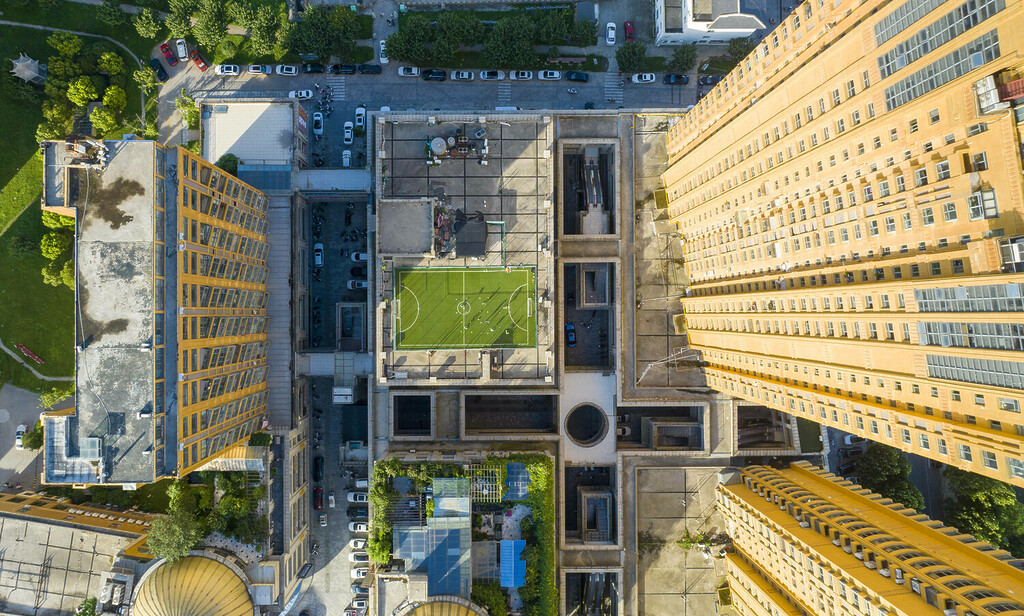
Xi Jinping has dreams. One of them is for China to become a football nation. He expressed this wish shortly after taking office ten years ago. What followed were spectacular transfers of world-famous football stars who were lured to China for a lot of money – but quickly sought to leave again. Now, they are focusing on talents within their own country. And for that, they need football fields, like the ones being built in this new residential complex in the city of Taizhou. If only Xi had thought of this earlier.
The current visit of Economy Minister Habeck to India is intended to bring “more resilience and diversification” to Germany, meaning greater independence from China. However, it may take some time before India, now the most populous country in the world, becomes an economic partner comparable to the People’s Republic.
In the meantime, it is important to set up our critical infrastructure in a way that is not dependent on a rivaling power. This is also emphasized in the new China strategy of the German government, with a particular focus on the 5G mobile network expansion, which was long believed to be unprofitable without the Chinese provider Huawei.
Now, newcomer 1&1 Mobilfunk aims to prove that it is possible without the Chinese. 1&1 has partnered with the Japanese company Rakuten and is pursuing “Open RAN” networks, where various manufacturers can come together instead of relying solely on Huawei components.
1&1 does have an advantage over other German providers as its 5G networks are not yet established, as Finn Mayer-Kuckuk reports. If a ban on Huawei occurs, it will result in huge costs for Telekom & Co. The major provider is even considering going to court over the matter.
Once, Hong Kong had the freest press in East Asia. However, since the Hong Kong government imposed the national security law almost overnight in July 2020, Hong Kong’s media landscape has been steadily moving closer to the heavily censored mainland. Over the last three years, about a dozen media outlets have been forced to shut down, and individual journalists are now openly on Beijing’s hit list.
In fact, even before the security law, press freedom in the special administrative region had eroded and weakened, as Felix Lee explains. In his Feature, he traces the developments since the handover of the colony to China in 1997 and comes to the hopeful conclusion that not all is lost yet.


The German government’s new China strategy aims to better protect critical infrastructure from the access of rival powers. To achieve this, it plans to quickly introduce a “critical infrastructure” law. One central aspect of this law is the data networks and, in particular, the 5G mobile network expansion

The newcomer in the telecom industry, 1&1 Mobilfunk, is making a strategic move by building its network entirely without Huawei components. The planning of its network began in 2019 when other providers were still firmly relying on Huawei. “Even then, there was a discussion about the use of Chinese suppliers,” Michael Martin, CEO of 1&1 Mobilfunk GmbH, told Table.Media. “It became increasingly inappropriate to sign contracts with Chinese suppliers when building a new network.”
Unlike established network operators Telekom, Vodafone, and Telefónica, 1&1 has an easier time avoiding Huawei components because their networks are already in place. However, this puts them under considerable pressure. A Huawei ban is looming on the government’s agenda. The planned “critical infrastructure” legislation could make this ban concrete.
1&1 has partnered with the Japanese company Rakuten to create a technology-agnostic, Huawei-free network across Germany. Rakuten is implementing the “Open RAN” concept, where “RAN” stands for Radio Access Network. Components from different manufacturers are designed to seamlessly cooperate in an Open RAN. A complete system, from the antenna to the server, can be procured from the free market. The only requirement is that the components follow the Open RAN standard and the software code is accessible. Rakuten maximizes the possibilities arising from this concept.
Rakuten, originally an e-commerce conglomerate, only entered the fiercely competitive Japanese mobile communications market in 2017. As a software-driven company, Rakuten adds the glue that holds together the assembled components: computer programs that enable the seamless cooperation of the parts. For this purpose, Rakuten has invested in US software companies, such as Altiostar, specializing in access network programs and Mavenir, developing software for core networks. Hardware suppliers include Japanese provider NEC from Tokyo and Cisco from the USA.

Rakuten, and now also 1&1, do not order everything from a single supplier, but instead, they purchase from manufacturers all over the world, especially from the USA and Japan. The same component can come from different suppliers. These parts can be combined and seamlessly integrated to form the mobile network. “We have decided not to collaborate with a single major network equipment supplier who provides everything but to cooperate with experienced specialists who deliver precisely fitting hardware, software, and powerful antennas,” says Martin. The experts from Rakuten assist in this process.
However, the other providers do not offer this level of openness. This also applies to Huawei, as the company confirmed upon request. The networks they offer are traditional Single RAN, which ties the customers to one provider. Huawei emphasizes that Single RAN is faster and more cost-effective.
The software of the Huawei platform fundamentally works only with Huawei hardware. On the positive side, everything is optimally aligned. Some experts even doubt whether the combination of cheaper everyday parts in Open RAN can achieve the same high performance and reliability as the solution from a single supplier.
Martin is, however, convinced that his Open RAN will work exactly as it should. “Rakuten has already shown in Japan that the technology performs very well.” The engineers at Rakuten had to identify and eliminate unexpected errors during their pioneering work with Open RAN. But these initial difficulties have been overcome, he said.
In Japan, Rakuten is considered an innovative company, and its network operates to the satisfaction of customers. Independent studies give Rakuten high marks, making it a standard-bearer for the Open RAN movement.
However, the example of 1&1’s new network should not distract from the difficulty that Telekom will face in replacing everything it has already installed by Huawei. The proportion of Huawei components in the networks of Telekom, Vodafone and Telefónica is not known but is estimated to be close to 60 percent.
Replacing these parts will be time-consuming and expensive. Barclays Capital estimates the cost for German providers at 2.5 billion euros, with Telekom accounting for 1.1 billion euros of that total. There are rumors that Telekom might sue the government for damages if it is forced to convert.
So far, no government agency or security firm has proven the existence of unexpected backdoors or other malicious traps in Huawei’s networks. For a framework law for critical infrastructure, theoretical future security risks are the focus, not current concrete threats.
Interesting questions will arise here. Open-RAN components also come from China in many cases, even if they bear Western brand names. For example, in the servers of the company Supermicro, which offers Open-RAN systems, suspicious chips from the People’s Republic of China were found in the past. The Open-RAN Alliance includes many Chinese names that have connections to the Chinese security apparatus.
Open RAN is by no means a panacea. “It is not inherently safer than single vendor solutions,” says Tim Ruehlig, an expert in technology security at the German Council on Foreign Relations (DGAP). When building such a network, one must also consider the trustworthiness of each individual manufacturer.
Additionally, Open RAN is based on a high level of virtualization, i.e., software-based networks instead of physical lines. Virtualization has significant advantages but also increases complexity. Complexity is precisely what undermines cybersecurity. “In short, Open RAN has pros and cons.”
Cost savings, which mobile operators hoped for with Open RAN, seem to be achievable only where there are no major existing networks. Rakuten and 1&1 are exceptions in this regard. “For Telekom to switch to Open RAN now doesn’t make much sense. The cost savings are likely to be limited,” says Ruehlig. Especially since the security vulnerabilities “won’t be truly closed.”
Ruehlig believes that the current popularity of Open RAN is driven more by politics than technology. The US, in particular, is interested in promoting Open RAN because none of the leading network equipment suppliers are based there, but the big cloud providers like Amazon, Microsoft, and Google are. The virtual mobile network is based on the cloud. “The appeal of Open RAN for us Europeans is currently unclear to me,” says Ruehlig.

Open RAN could, nevertheless, break the era of a small number of major network equipment suppliers. So far, five providers dominate the market: Nokia, Ericsson, Huawei, ZTE and Samsung. Even with doubts about the efficiency of Open RAN, a German “critical infrastructure law” could swing the pendulum in this direction as a political decision.

Hong Kong’s Citizens’ Radio never had an official license. Yet, the broadcaster, which always advocated for democracy, managed to survive for 18 years. The authorities in the southern Chinese special administrative region tolerated its existence. Moreover, even politicians who were not part of the democratic camp granted interviews to the station. However, on June 30, 2023, the station aired its last program.
“The political situation in Hong Kong has become unstable,” said Tsang Kin-shing before the final broadcast, which was recorded in a crowded studio in the presence of numerous supporters. “When we invite guests, they cannot speak freely because there are so many red lines,” explained the 67-year-old, citing the reasons for the shutdown. Additionally, the authorities had frozen the company’s account where donations were received, leading to financial drought for the broadcaster.
Since the Hong Kong government, under pressure from the Chinese leadership in Beijing, hastily enacted the National Security Law in July 2020, the special administrative region’s authorities have targeted pro-democracy activists and severely impacted journalists. The most prominent case is that of the popular tabloid Apple Daily, which was forced to cease operations in 2021. Its publisher, Jimmy Lai, has been in prison for two and a half years and faces the possibility of life imprisonment. Former editors-in-chief of the now-defunct news website Stand News are also standing trial. Over the past three years, around a dozen other media outlets have closed down.
Once prestigious newspapers like Ming Pao or South China Morning Post (SCMP) have become government-friendly publications. A former SCMP employee reveals that dozens of journalists were fired or left voluntarily because they disagreed with the new editorial stance. This has also affected local news coverage. A Hong Kong media scholar, who prefers to remain anonymous due to fear of repression, laments that controversies about Hong Kong unrelated to the Beijing leadership no longer appear in these media outlets.
Prior to 1997, the year when Hong Kong was handed over to the People’s Republic of China after 150 years of British colonial rule, the city had the most unrestrained press in East Asia. The leadership in Beijing had guaranteed the Hong Kong people significant legal, economic, and political autonomy for 50 years. Freedom of speech, freedom of the press and publication rights are officially protected under Article 27 of the Basic Law of Hong Kong and based on Article 16 of the Hong Kong Bill of Rights.
The erosion of these rights began long before the introduction of the National Security Law. Targeted attacks on liberal media outlets, withdrawal of advertising, and the appointment of pro-Communist Party editors-in-chief had already started in the early 2000s. Individual journalists were physically assaulted.
In 2002, Hong Kong was ranked 18th on the Reporters Without Borders’ annual press freedom index. By 2015, the Chinese special administrative region had slipped to 70th place. With the implementation of the National Security Law in 2020, Hong Kong now sits at a dismal 140th place.
Although there are still differences between Hong Kong and the mainland, mainland China strictly controls the media with absolute censorship. Media outlets are centrally directed with daily directives. Foreign online networks such as Facebook, Twitter, YouTube and most Google services are blocked, as well as the websites of The New York Times and The Wall Street Journal.
In Hong Kong, most internationally used websites and online networks remain accessible. Only specific articles become victims of censorship. For example, an article about a diplomatic dispute between China and the United States, published on June 21 on the website of the Chinese-language newspaper Lianhe Zaobao from Singapore, was not accessible in Hong Kong. The article quoted US President Joe Biden referring to Xi as a “dictator”.
Nevertheless, when it comes to press freedom, Hong Kong increasingly resembles the dire conditions in the mainland, which ranks second to last among 180 countries assessed. Currently, 101 media workers are imprisoned in China, while in Hong Kong, the number stands at 14. Combined, Reporters Without Borders refers to it as the “world’s largest prison for media professionals”.
Resistance comes from a few independent online media outlets. Former journalists from the South China Morning Post founded the English-language internet platform Hong Kong Free Press, supplied by journalists living in the United Kingdom, Taiwan or Singapore. In June, Hong Kong’s highest court overturned the conviction of investigative journalist Bao Choy in connection with protests critical of the government. Choy had investigated an attack on democracy activists by a group of armed men.
In 2021, a judge found her guilty of “making false statements” and imposed a fine. The Supreme Court justified its decision based on “constitutionally guaranteed freedom of speech and the press” – a glimmer of hope that freedom in Hong Kong is not completely extinguished.
For the first time in over ten years, a Federal Minister for Economics, Robert Habeck (Green Party), is visiting India. His objective is to reduce the economic dependencies of many German companies on China and promote diversification towards the subcontinent. In addition to holding talks with top politicians in New Delhi, he plans to visit companies in Mumbai. He will also participate in the G20 Energy Ministerial Meeting in Goa.
From Habeck’s perspective, India offers great potential: Demographically, India has surpassed China as the most populous country in the world, with around 1.4 billion people. Economically, India is rapidly catching up. While the trade volume between Germany and India has increased significantly in recent times, reaching around 30 billion euros last year, India still cannot compete with China. The trade volume between Germany and the People’s Republic is nearly ten times higher at around 299 billion euros.
Habeck’s trip to India is part of the new China strategy presented by the German government last week. It includes a concept called “De-Risking,” aiming to reduce unilateral dependencies on resources and broaden and diversify supply chains. Before departing for New Delhi, Habeck stated, “Broadening our horizons means not always focusing solely on China.” flee
The three-day visit of US Special Presidential Envoy for Climate, John Kerry, to China has led to a revival of climate dialogue between the two countries, even though no specific substantive agreements have been reached. Both sides plan to work together “intensively” in the coming weeks, Kerry said. Dates for the next two meetings are being prepared. With only four months left until the next climate conference, they must make up for lost time. The goal is to achieve a “working product” that is acceptable in both countries, taking into account the challenging circumstances in the US and China, Kerry emphasized.
The following topics are expected to be discussed, according to Kerry:
Reducing coal usage is a sensitive issue in China as the country’s energy security is still heavily reliant on coal. China already announced an action plan to address methane emissions last year.
During his visit, Kerry met with Premier Li Qiang, Vice Premier Han Zheng, China’s climate envoy Xie Zhenhua, and top diplomat Wang Yi. Kerry called for decoupling the climate issue from other disputes between the two superpowers. President Xi Jinping emphasized during the visit that China is committed to its climate goals, but China must determine the path and pace on its own and not be influenced by the outside.
Observers also hoped for progress in climate financing alongside agreements on methane emissions and coal utilization. Both the USA, whose involvement in climate financing is blocked by Republicans, and China, which sees itself as a developing country, have responsibilities in this area. Premier Li Qiang highlighted during the visit that industrialized countries bear the main responsibility for climate financing while developing countries should contribute according to their capabilities.
The visit was overshadowed by geopolitical tensions between the US and China. Official discussions on climate change were suspended after US House Speaker Nancy Pelosi’s visit to Taiwan. Kerry acknowledged the difficult relationship between the two countries and said, “We are trying to restore the process we have worked on for years.” nib
Despite an increase in COVID-19 death tolls in June, there is no longer a mask mandate in public spaces anywhere in China. Since mid-April, people have not been required to wear face coverings in public transportation, offices and schools. Now, apparently, the mask mandate has been lifted for public events as well. Recently, even during television appearances, party cadres and high-ranking officials used to wear masks over their mouths and noses. According to observations by China.Table, this has not been the case since Monday.
However, travel to and from China has not yet returned to pre-COVID levels. According to Chinese media reports, the state immigration authority recorded around 168 million inbound and outbound travels in the first half of 2023. This is less than half (48.8 percent) of the pre-pandemic travel volume. flee/dpa

Chinese Foreign Minister Qin Gang is missing without a trace. His last public appearance dates back 24 days to this Thursday. However, Beijing does not consider it necessary to clarify the speculations surrounding Qin.
The 57-year-old, who was considered a hardliner and took office in March, was last seen on July 25 in Beijing, where he received Russian Deputy Foreign Minister Andrei Rudenko, among others. The Foreign Ministry released a photo of the meeting. Since then, no one has seen Qin.
Just a few days before a planned meeting with EU High Representative Josep Borrell in Beijing on July 10, China canceled the appointment without giving any reason. Qin also did not participate in a summit meeting of the foreign ministers of the Southeast Asian states of ASEAN last week. Instead, China’s top diplomat, Wang Yi, attended, who ranks above Qin in the power hierarchy. Recently, Wang represented the Foreign Minister at a number of other events.
Asked why Qin did not attend the ASEAN meeting, a spokesperson for the Beijing Foreign Ministry said last Thursday that this was not possible for “health reasons”.
Since then, speculations have even arisen that Qin was taken out of the picture due to an extramarital affair. Addressing unconfirmed online rumors that Qin had an affair with a journalist from Hong Kong’s Phoenix TV and even fathered a child with her, a spokesperson for the Beijing Foreign Ministry said on Monday that they had “no information” on the matter. However, she did not repeat that Qin was sick.
In the protocol of the daily press conference of the Foreign Ministry, there are no questions about Qin at all. In both last week and this week, all inquiries about the whereabouts of the Foreign Minister were removed.
The disappearance of high-ranking officials, celebrities and businesspeople is not unusual in China. Often it later turns out that they were involved in investigations or other controversies.
One example from the world of politics is Xiao Yaqing, former Minister of Industry and Information Technology. He disappeared for 21 days last year before it became known that the top anti-fraud authority had initiated investigations against him.
Among the most well-known cases in recent years is former Chinese Interpol chief Meng Hongwei, who disappeared during a trip to China in 2018. Two years later, a Chinese court sentenced him to 13 years in prison for accepting bribes.
In February of this year, investment banker Bao Fan also disappeared. Initially, his company, China Renaissance, said they could no longer contact him. A week later, the company announced that they had “learned” that Bao was cooperating with an investigation.
Chinese tennis star Peng Shuai also temporarily disappeared from the public eye in 2021. She had accused former Chinese Vice Premier Zhang Gaoli of sexual misconduct. Her allegations in a Weibo post were immediately censored. Zhang Gaoli was not harmed at the time and soon after participated in public events again.
When Chinese climate envoy Xie Zhenhua missed a panel discussion on the sidelines of the Munich Security Conference in February, it was initially said that he had contracted COVID-19. Later, Xie apologized in a video message for not being able to attend personally due to “health reasons”. However, his condition seemed to have been more serious than publicly announced.
US climate envoy John Kerry later told Foreign Policy magazine that Xie had suffered “some sort of stroke” in January, which incapacitated him for “about a month and a half”.
And what now for Qin? While it is not unlikely that the Foreign Minister is sick, Richard McGregor, Senior Fellow for East Asia at the Lowy Institute in Sydney, told Bloomberg that the longer he is absent, the more likely it is that “there is another, much more serious reason”. Joern Petring
Liu Xunfeng will become the new CEO of Semiconductor Manufacturing International Corporation (SMIC). The Chinese chipmaker made the announcement on Monday. Liu will succeed Gao Yonggang, who is stepping down from his posts as chairman and chief executive officer. Liu was previously vice chairman at SMIC. Previously, he held senior positions at Sinopec and the Shanghai Huayi chemical group, among others.
Xiao Guo-Deters is the new Strategy Manager at Cosco Europe. The business communications specialist, who was educated in Mainz and Beijing, previously worked, among other things, as liaison manager for the China business of the Mainz-based lubricant manufacturer Fuchs. She will be based in Hamburg, working for the Chinese shipping company.
Is something changing in your organization? Let us know at heads@table.media!

Xi Jinping has dreams. One of them is for China to become a football nation. He expressed this wish shortly after taking office ten years ago. What followed were spectacular transfers of world-famous football stars who were lured to China for a lot of money – but quickly sought to leave again. Now, they are focusing on talents within their own country. And for that, they need football fields, like the ones being built in this new residential complex in the city of Taizhou. If only Xi had thought of this earlier.
